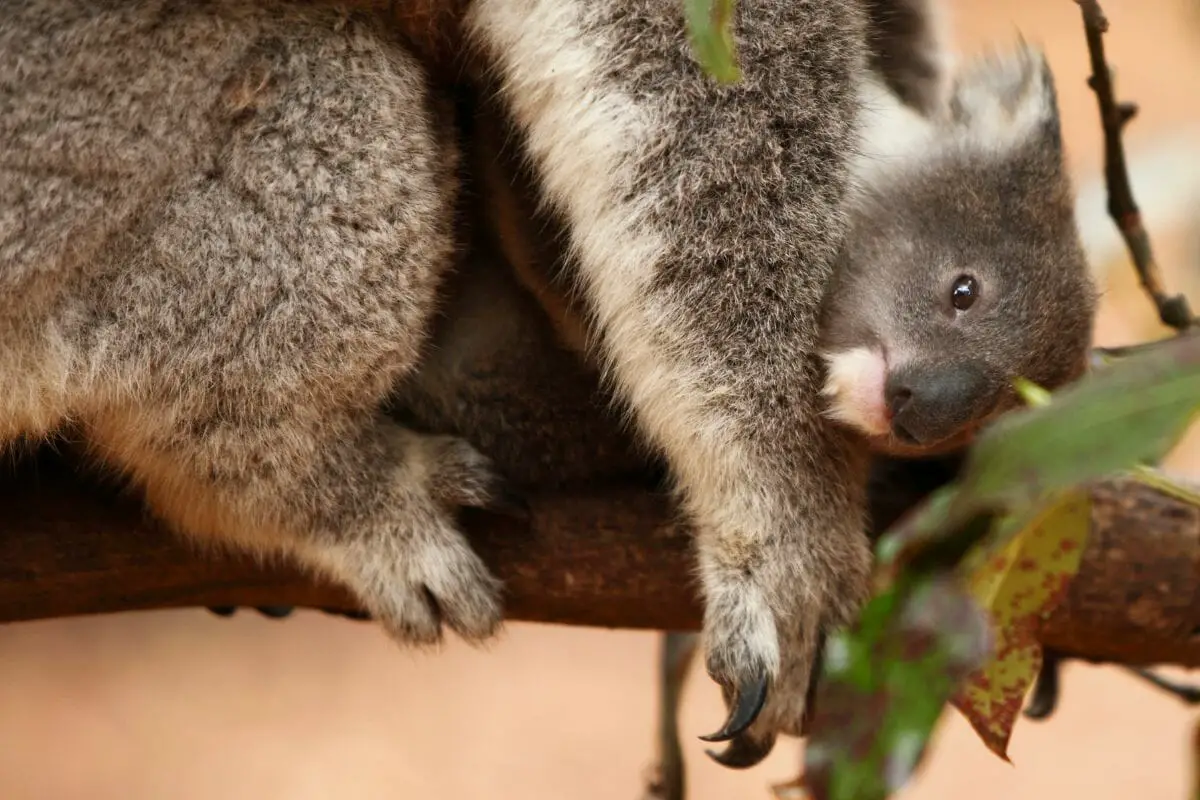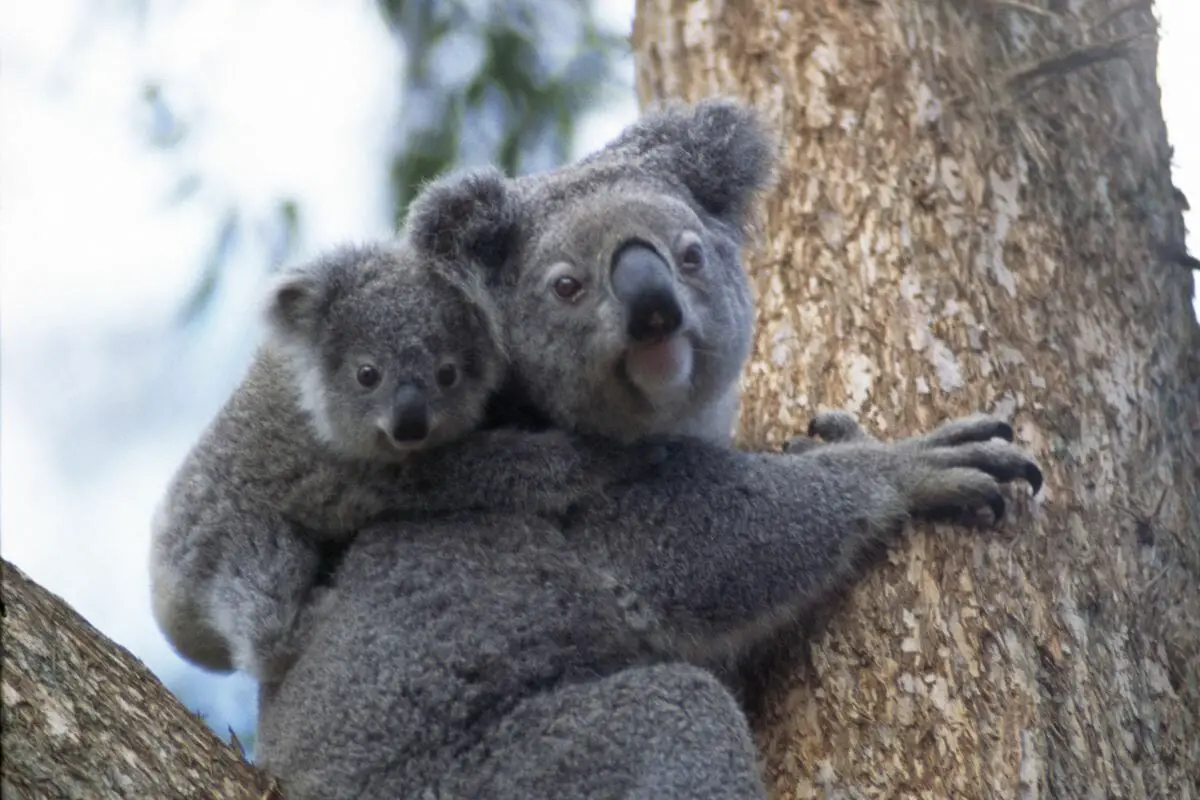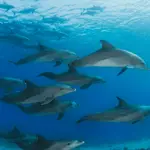When we think of animals that nurture their babies in their pouches, we often think of kangaroos first, but they’re not the only marsupials that have this special feature.
The pouch is an important part of a koala’s development, as it houses the young until they’re strong enough to venture outside by themselves.

But, how long exactly does it take for a koala bear to be developed enough to move outside of their mother’s pouches?
If you’ve ever found yourself pondering this question, you’re not alone. The good news is that we’ve got all the answers you need, simply keep reading below to find out more.
How Long Do They Stay In The Pouch?
Let’s get straight into it and answer the question of how long a koala baby will stay in its mother’s pouch until it’s ready to survive by itself.
Generally, the koala baby will be fully developed at around 36 weeks, or 8 months.
At this stage, the koala baby will spend very little time inside the pouch, and will prefer to venture outside by itself.
This doesn’t mean that they forgo the pouch entirely however, and they will continue to stay with their mothers for 12 months.
The Koala Pouch
Many people aren’t aware of the fact that koalas have pouches in the first place, and think that this feature is purely due to kangaroos.
This isn’t the case however, and the koala pouch is incredibly important for the species development.
This doesn’t mean though that the koala pouch is different from the kangaroo’s, and in fact there are a few distinctive differences that we can look at.
The first of these is that the kangaroo’s pouch will open at the top, but the koala bear’s pouch will open towards the rear, near their hind legs.
Although this might appear strange initially, it actually makes a lot of sense. Because kangaroos hop around on the ground, it is safe for their joeys to be facing the same way as them.
Because koala bears, however, spend a lot of time moving from tree to tree, the pouch facing in the downward direction gives them a lot more protection.
If it were facing the same direction as a kangaroo’s pouch, the babies might be at risk of tumbling out.
Some of you reading this may be confused, wondering how the koala can carry their babies in a downward facing pouch without them falling out.
The answer is simple, the koala mother has incredibly strong muscles which keep the baby in place within the confines of the pouch.
These muscles are called the sphincter muscles, and they are an incredibly effective and powerful tool for protecting the young koala bears.
Other marsupials, such as the kangaroo, have similar muscles to the ones discussed here, but they are used for different reasons.
Koala bears, as we mentioned above, use their sphincter muscles to protect their young and to keep them from falling out of the pouch.
Kangaroos on the other hand, will use their sphincter muscles simply to close the pouches to insulate their children.
The baby kangaroos also play a role in keeping themselves safe within the pouch.
One of the ways in which they make sure that they don’t fall out of the pouch is by latching on to their mother’s teat, which actually serves as a good gripping device.
As well as this, they will also use their hands to grip onto the fur within the pouch, and this works as an effective tool for protecting themselves whilst inside the pouch.
What Are Baby Koalas Called?

We’ve all heard of baby kangaroos being referred to as ‘joeys’, but I’m sure that many of you reading this article won’t be aware of the fact that this name actually acts as a blanket term for all marsupial babies(see also: What Are Marsupial Babies Called? They’re Incredibly Cute).
That’s right, that includes other animals in the marsupial kingdom too, such as sugar gliders and possums.
The female koala bear will carry her joey within her stomach for approximately 35 days before she is ready to give birth.
This may seem like a short amount of time for a full fledged pregnancy, but this is a common trait for members of the marsupial family.
Possums will only have a pregnancy of around 14 days, for example, because they are not able to carry the placenta for very long.
After the koala children are born, they will then move towards the pouch, where they will latch onto one of their mother’s teats.
This will serve as their life supply for the next 6 months of their lives.
This explains why the pregnancies are so short for marsupials, because the majority of their development happens outside of the womb inside the pouch.
As we mentioned, the joey will stay inside its mother’s pouch fastidiously for 6 months, before starting to venture outside a little.
They will typically reach the full stages of their development anywhere from 8 to 9 months.
At month 12, the joey will be ready to be completely weaned off of their mothers permanently.
They will considered to be fully grown and sexually active once they’ve reached the age of 2 for females, and 4 for males.
Once the female koala has reached sexual maturity, she will continue to produce offspring for each year that she is alive.
The mating season for a koala bear will last for approximately 8 months, which is an extremely long period of time. It is typically anywhere between February and August.
It is during this period that the previous joeys produced by the mother will need to move on and live independently so that they can produce more offspring.
If the female koala bear does not get pregnant during this season, however, the joeys will typically continue to stick with her.
What Does The Joey Feed On?
As we mentioned briefly below, the joey will feed on its mother’s milk as a form of sustenance for the first portion of its life. However, as time passes, they will also begin to feed on another substance called ‘pap’.
They will begin to feed on this substance when they are around 22 weeks old.
It is a special kind of fecal dropping produced by the mother that helps to give the baby joey the additional nutrients they need in order to develop properly.
Final Thoughts
To sum up, baby koalas, which are also known as joeys, stay in their mother’s womb constantly for the first 6 months of their life.
After this, they will begin to venture out briefly and return to the pouch for a further two or three months.
The koala pouch is integral for the joeys development, as it provides them with the protection that they require, as well as providing them with a source of milk.








